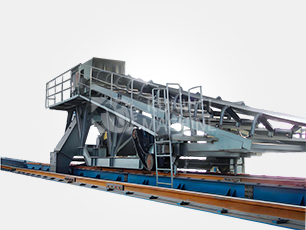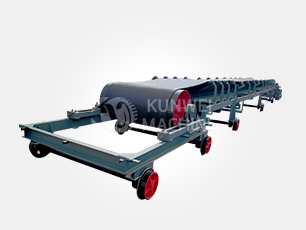Why belt conveyors slip
News 2025-05-06
Where does slippage of a belt conveyor refer to? And why does the belt conveyor itself slip? If you are interested, please read on! ~
Belt conveyor slipping refers to the general part of the conveyor belt slipping, for example, when there is a runout, slipping may be one of the reasons for the runout of the conveyor belt. The reasons for belt slippage are mainly divided into the following categories:
1. Insufficient tension
The key factors leading to it:
① Tensioning device failure (such as spiral tensioning mechanism corrosion, insufficient weight counterweight, hydraulic system oil leakage);
② long-term stretching of the belt leads to permanent deformation, loss of elasticity.
Typical scenarios: equipment for a long time after the operation of the tension is not adjusted in a timely manner, especially in the high-temperature environment of the belt thermal expansion and contraction is obvious, exacerbated by the decline in tension.
2. drive roller friction is insufficient
Key factors leading to it:
① roller rubber wear (such as surface grooves ground flat);
② roller surface adhesion of water, oil or materials (such as coal, dust);
③Hardening of the rubber surface due to humidity and low temperature environment.
Typical scenarios: mining or cement plants and other dusty scenes, the drum surface is easy to stick material to form a “smooth layer”; rainy season or wash the equipment after the water is not cleaned up in time.
3. Excessive load or abnormal operating resistance
The key factors leading to this:
① overload (instantaneous feeding amount is too large or accumulation of blockage);
② Roller jamming, bearing damage resulting in a sudden increase in local resistance;
③ material friction under the conveyor belt (such as poor sealing of the guide trough).
Typical scenarios: Suddenly starting a fully loaded belt, or failing to empty the material during shutdown, resulting in excessive load during the second startup.
Then, according to my years of experience as a manufacturer, I have organized three! Targeted solutions:
1. Optimize the tension
① Screw tensioning: regularly check the screw stroke to ensure that the margin ≥ 50%;
② weight tensioning: clean up the counterweight guide accumulated ash to prevent jamming, according to the design value to increase the counterweight block;
③ Hydraulic tensioning: monitor the oil pressure, replenish the hydraulic oil and replace the aging seals in time.
ps: install tension sensor for real-time monitoring to avoid relying on manual experience adjustment.
2. Improve the friction of the drive roller
Treat the surface of it:
①Replace the rubber-coated roller with grooves (such as diamond and herringbone pattern, the friction coefficient is enhanced by more than 30%);
② Spray polyurethane anti-slip coating (for high humidity environment).
ps: daily maintenance tips: use a wire brush to clean the drum surface adhesion during downtime; or drum near the addition of scrapers (such as alloy scraper).
3. Control load and reduce resistance
① prevent overloading can optimize the design of the feeding port (such as increasing buffer baffle, reduce material impact).
② Reduce operating resistance can be carried out monthly periodic checks to see the flexibility of the rotation of the rollers, replacement of jammed rollers (idling resistance should be ≤ 2.5N); clean up the return belt below the accumulation of material, repair the sealing strip of the guide chute.
If there is a sudden slipping phenomenon, we should immediately shut down to avoid belt burn; then check whether the tensioning device is invalid, quickly increase the temporary counterweight (such as sandbags); Finally, you need to remove the drive pulley surface of the foreign body, sprinkle dry wood shavings or rubber powder to temporarily increase the friction.
In fact, the belt slipping problem is not unavoidable, it is necessary to long-term maintenance! Such as regular maintenance: quarterly calibration of tension, every six months to detect the thickness of the drum rubber (wear > 3mm need to be replaced); Secondly, the design needs to be designed from the root to avoid the problem as far as possible: high humidity scenarios choose stainless steel drum + ceramic rubber, dusty area with air blowing device.


